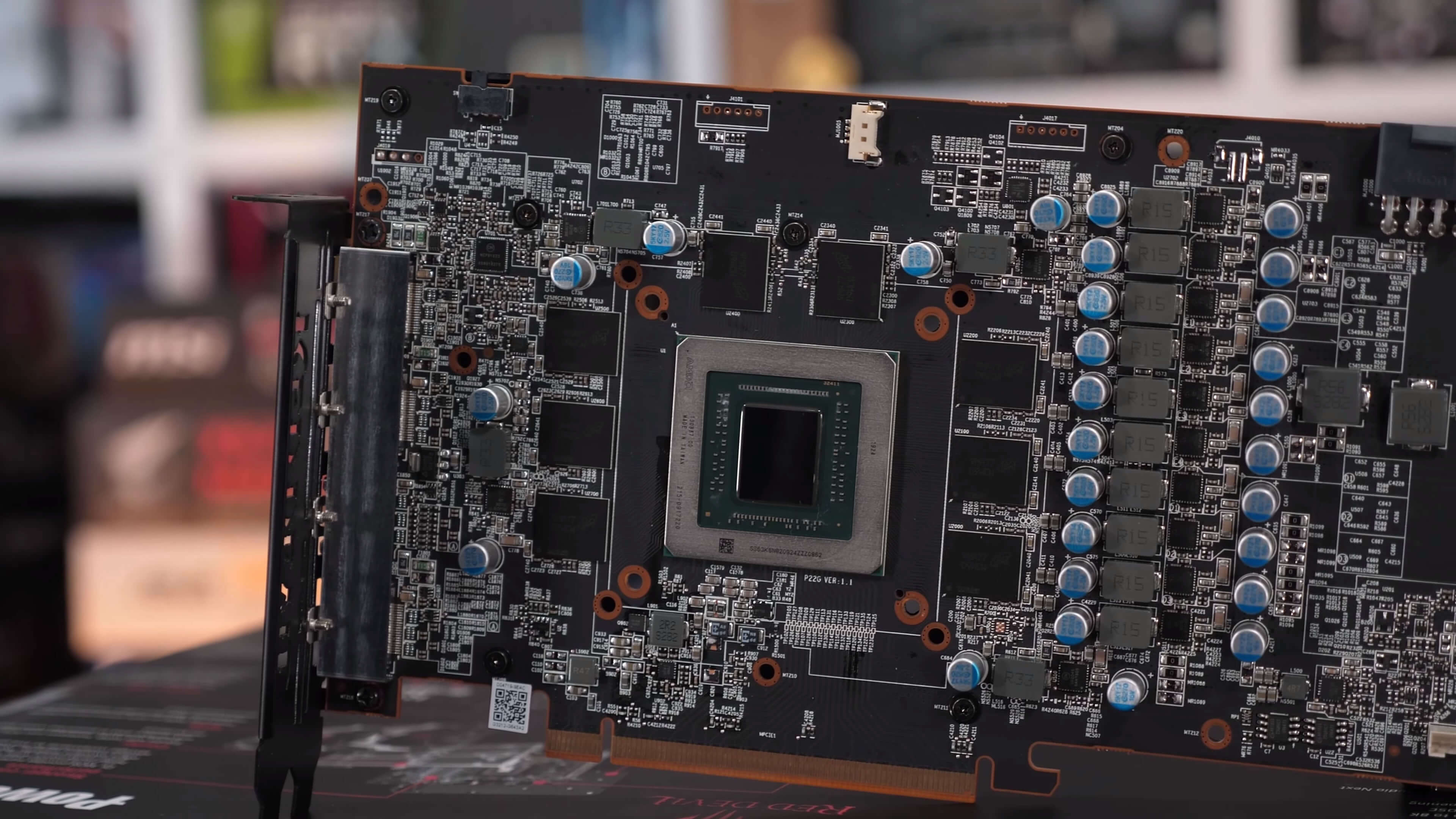Today we've got a massive 41 game benchmark comparing the GeForce RTX 2060 Super and Radeon RX 5700 head to head. This big comparison includes new titles such as Borderlands 3, Gears 5 and Tom Clancy's Ghost Recon Breakpoint. All the results are brand new and were gathered during the last week using the latest display drivers as well as the latest game versions.
Representing AMD we have the PowerColor Red Devil 5700 and for Nvidia we have the MSI RTX 2060 Super Gaming X. The Red Devil is a premium Radeon RX 5700 card that comes in at $390, but as we've already established in previous reviews, in terms of performance, it's no faster than base model cards selling at the MSRP. The same is largely true of the Gaming X, it comes in at $430, but you'll get very similar performance from other models sporting the same GPU.
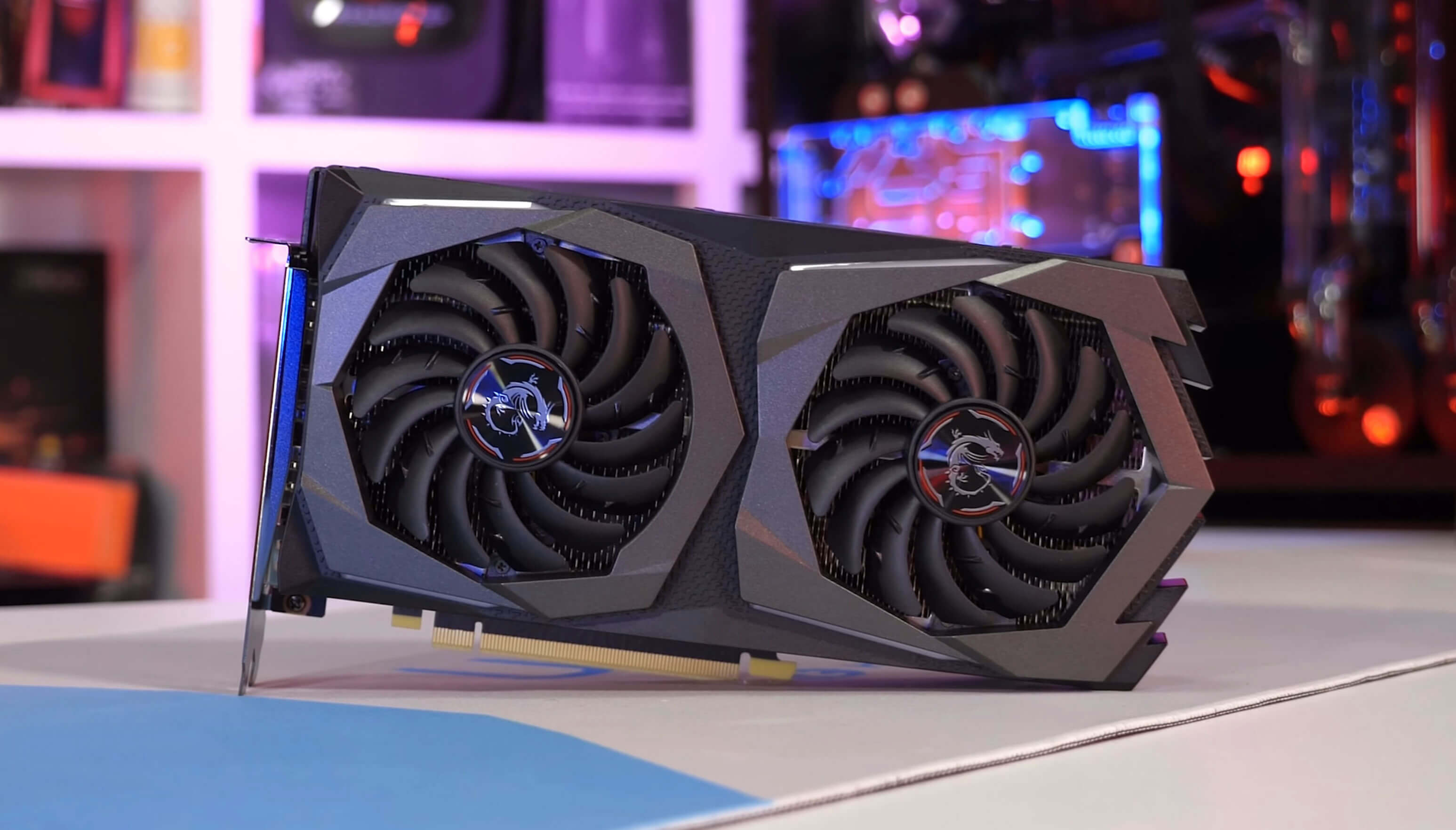
Going on the AMD and Nvidia suggested pricing, the RX 5700 comes in at $350 and the RTX 2060 Super at $400. We'll go over pricing in better detail at the end of the article, while also discussing alternative options.
For now let's see how these two GPUs compare in a massive range of games using our Core i9-9900K test rig which has been overclocked to 5 GHz and features 16GB of DDR4-3400 memory. All the testing took place at 1080p and 1440p and as usual, we'll look at around a dozen games and then jump into the performance breakdown graphs for all 41 games.

Benchmarks
Kick starting the benchmarks we have Borderlands 3 and here the Radeon RX 5700 offers higher frame rates at both tested resolutions, though the margins aren't huge. The 5700 is 6% faster at 1080p and 10% faster at 1440p. On second thought, the 1440p margin is reasonably large and you'll start to notice that 14% increase in 1% low performance.
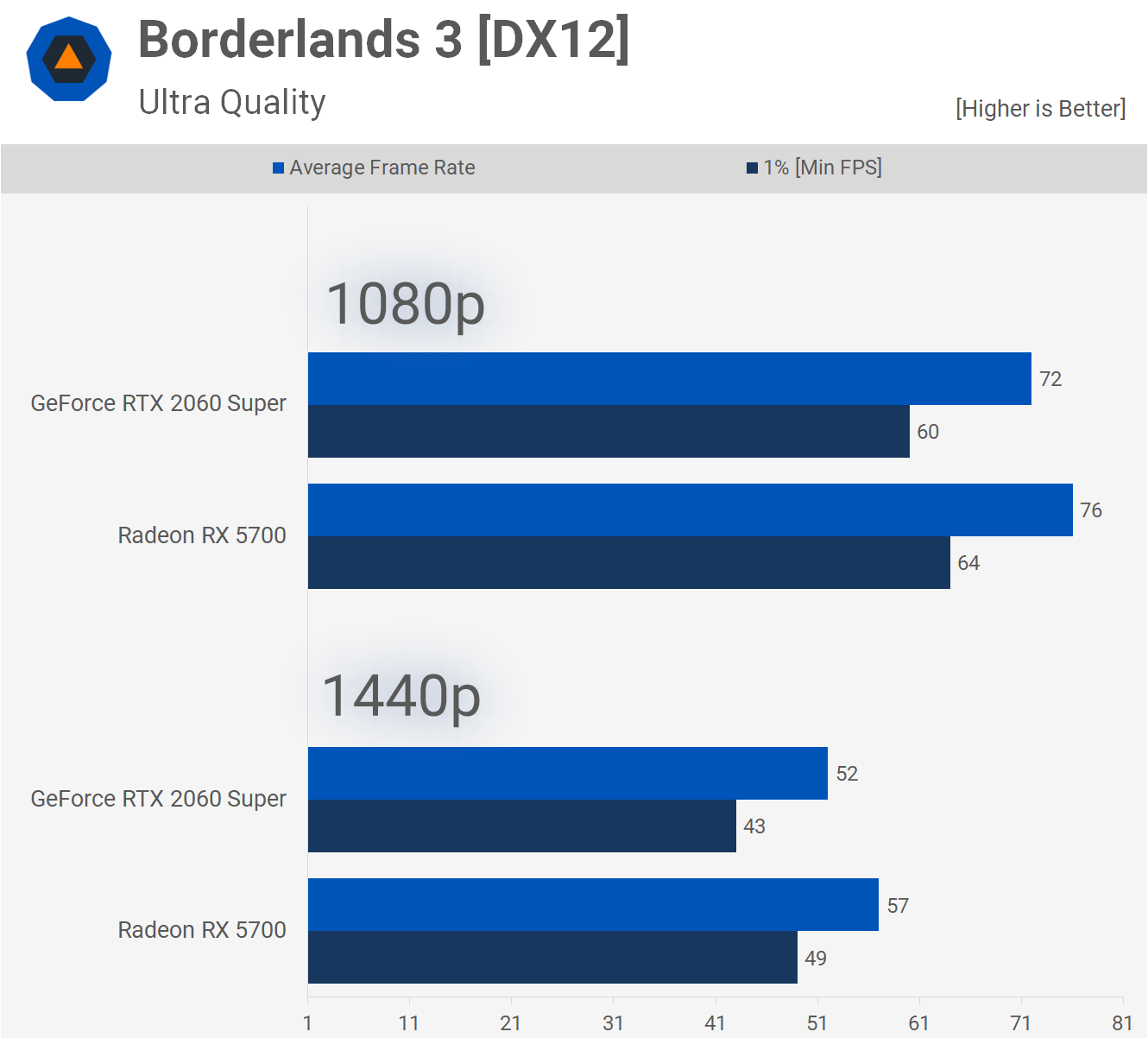
The Radeon GPU was also faster when testing with Gears 5 as it enjoys up to a 10% performance margin at 1080p. The results are more competitive at 1440p and while we do see the same 1% low performance, the 5700 was a whisker faster when comparing the average frame rate.

The 2060 Super gets its first win in Ghost Recon Breakpoint, providing 7% more performance at 1080p. That said the margin was neutralized at 1440p and here both GPUs averaged just over 70 fps.
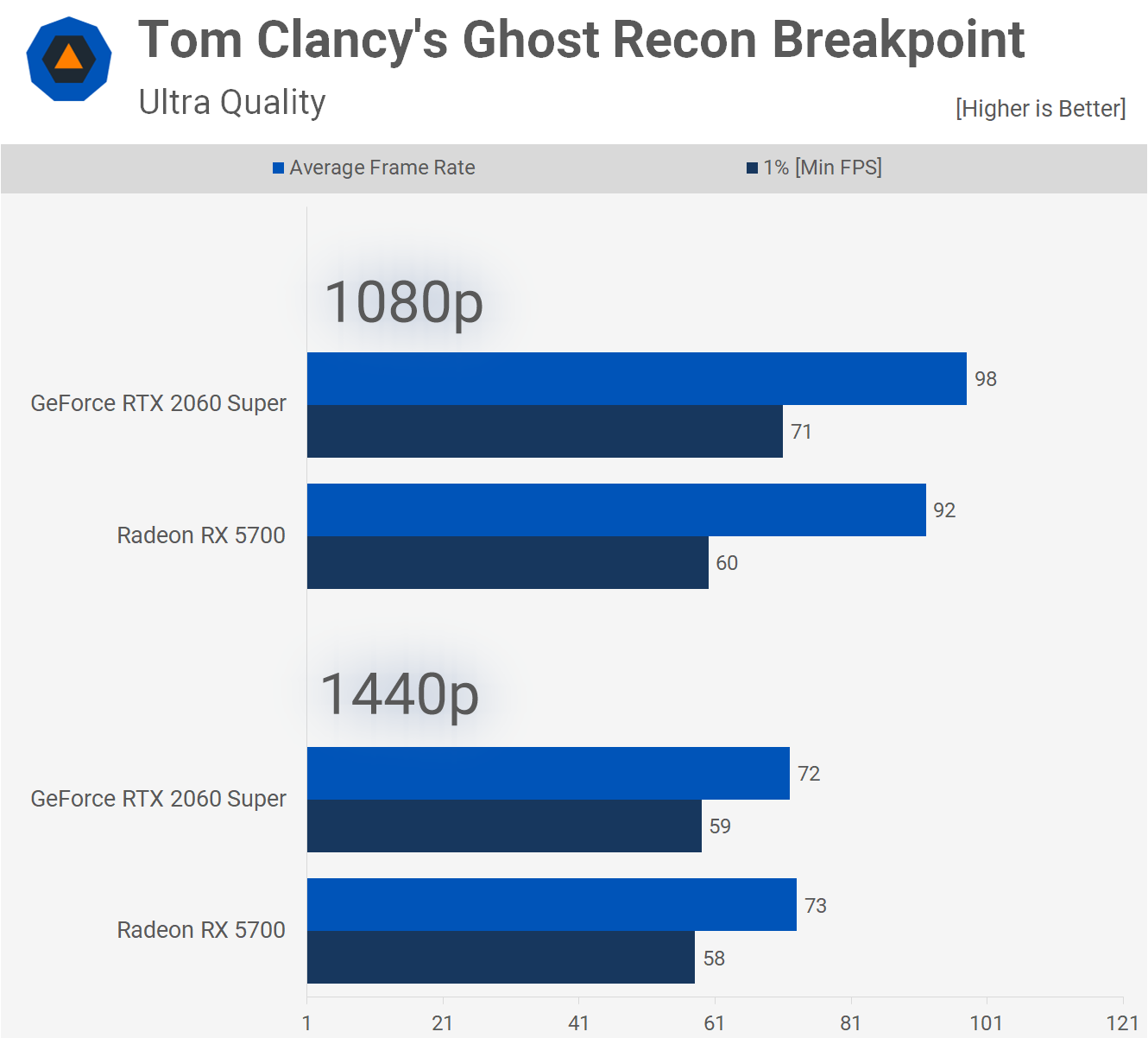
Upon release the Radeon RX 5700 was 31% faster than the 2060 Super when testing with Forza Horizon 4. However a recent Nvidia driver boosted performance by around 20-25% for the Turing based GPUs and as a result the 5700 is now just 8% faster, though both GPUs did push over 100 fps at both 1080p and 1440p.
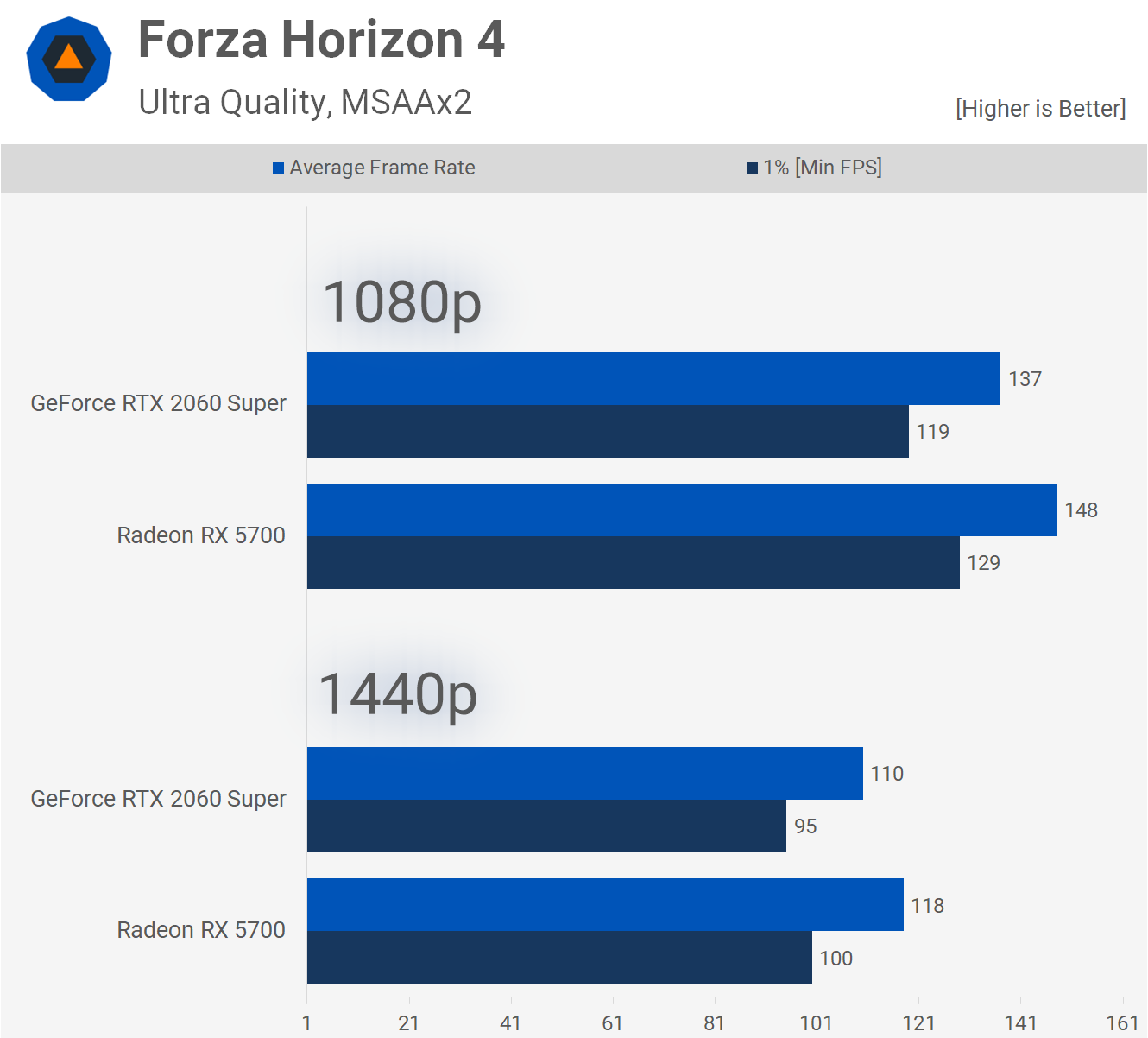
World War Z has seen a couple of performance updates over the past few months, but these haven't changed the margins between AMD and Nvidia GPUs. The 5700 is still 11% faster on average at 1080p and 8% faster at 1440p.
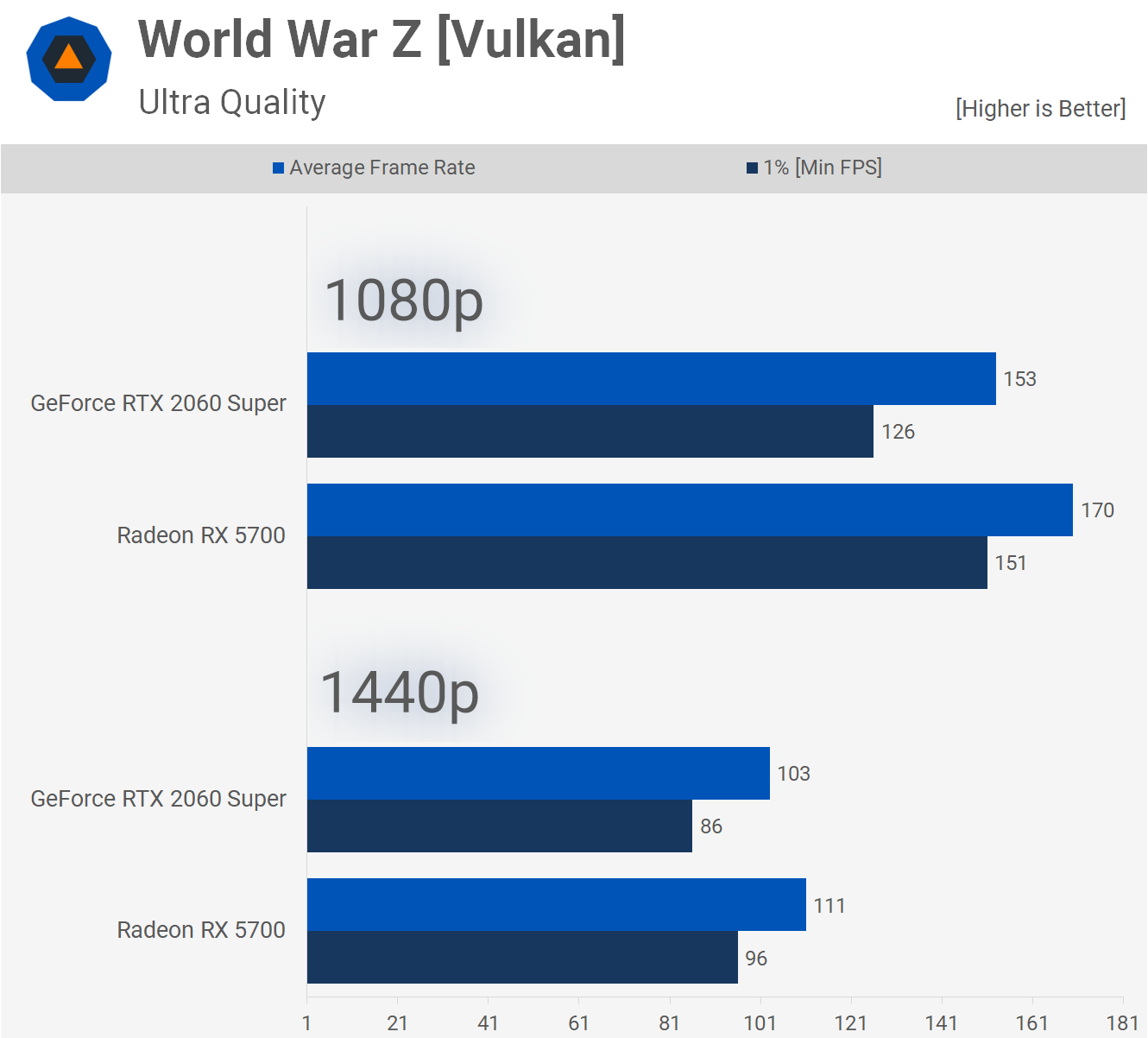
The Battlefield V results are extremely competitive, here the 5700 was just a frame faster at 1080p and only 5% faster at 1440p, so overall a very similar gaming experience using either GPU.
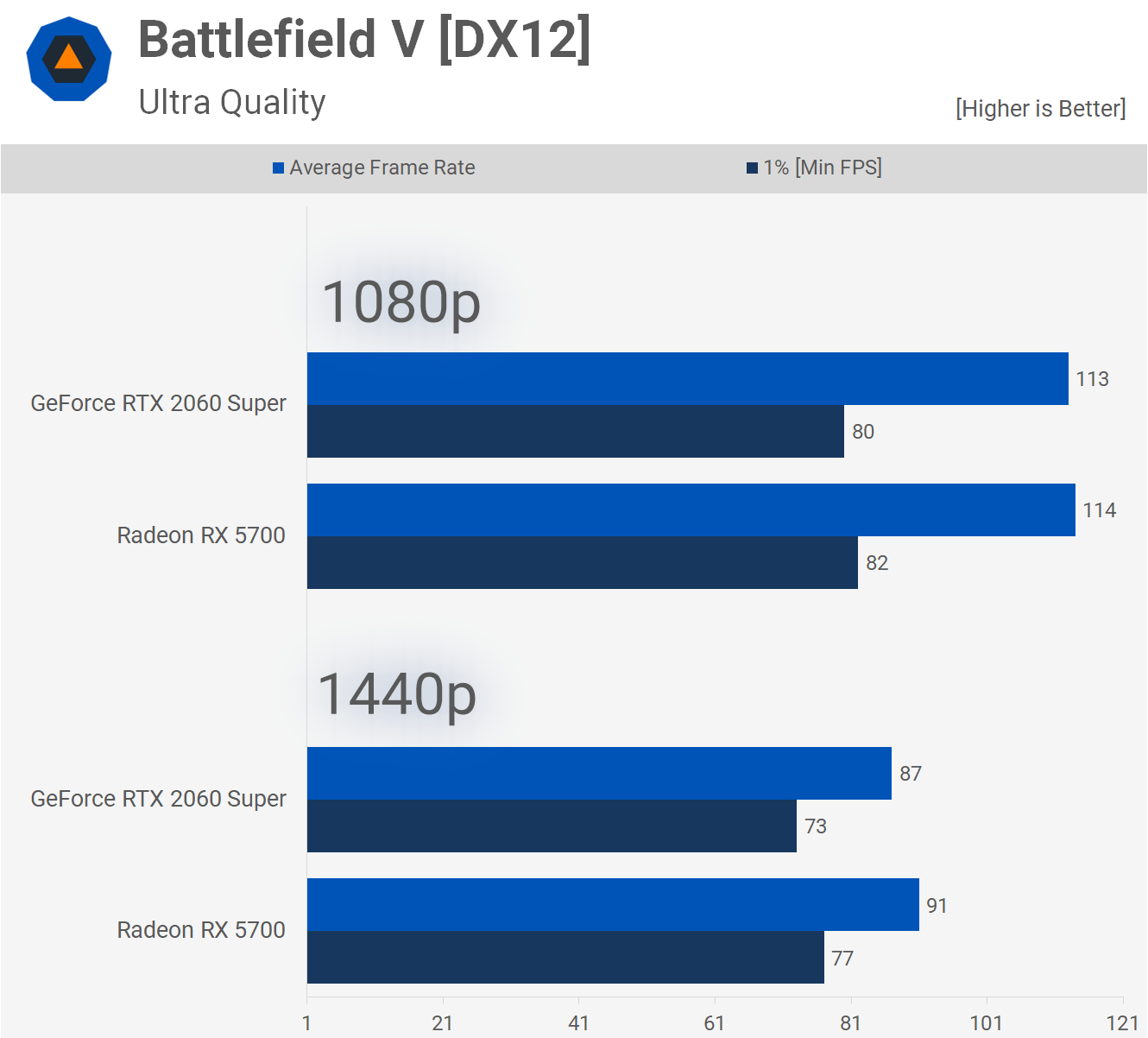
Nvidia generally enjoys a performance advantage in Apex Legends and we see exactly that when comparing the 5700 and 2060 Super. The GeForce GPU was 9% faster at 1080p and 7% faster at 1440p, not big margins, but still a win for the green team.
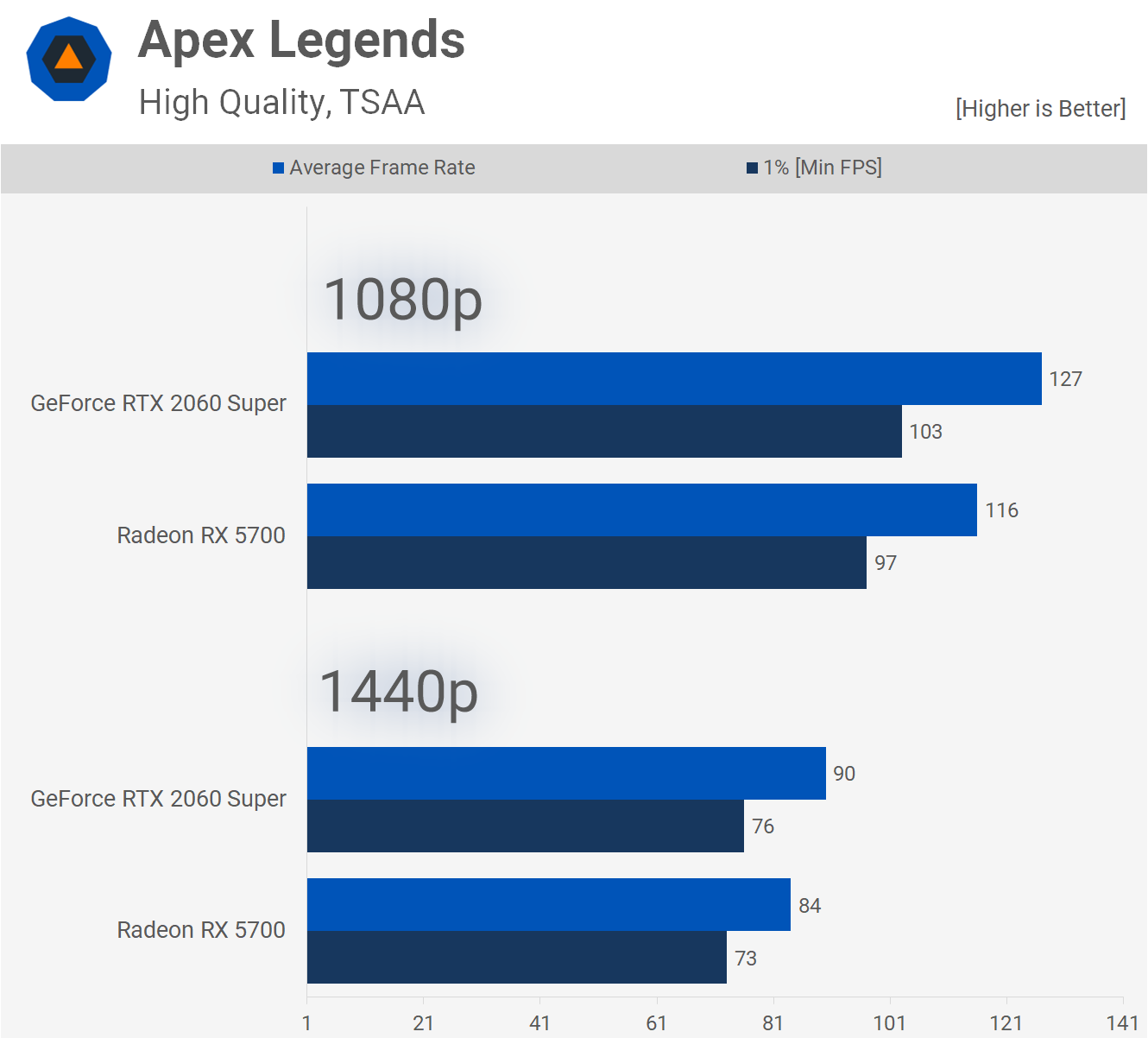
We'd be quite surprised by these results if we hadn't recently seen similar margins when comparing the RTX 2070 Super and 5700 XT. AMD appears to do very well in Counter-Strike: Global Offensive and here the 5700 was 16% faster at 1080p and 8% faster at 1440p. Of course, we're seeing frame rates well over 200 fps, so how much these margins matter we'll leave up to you to decide.
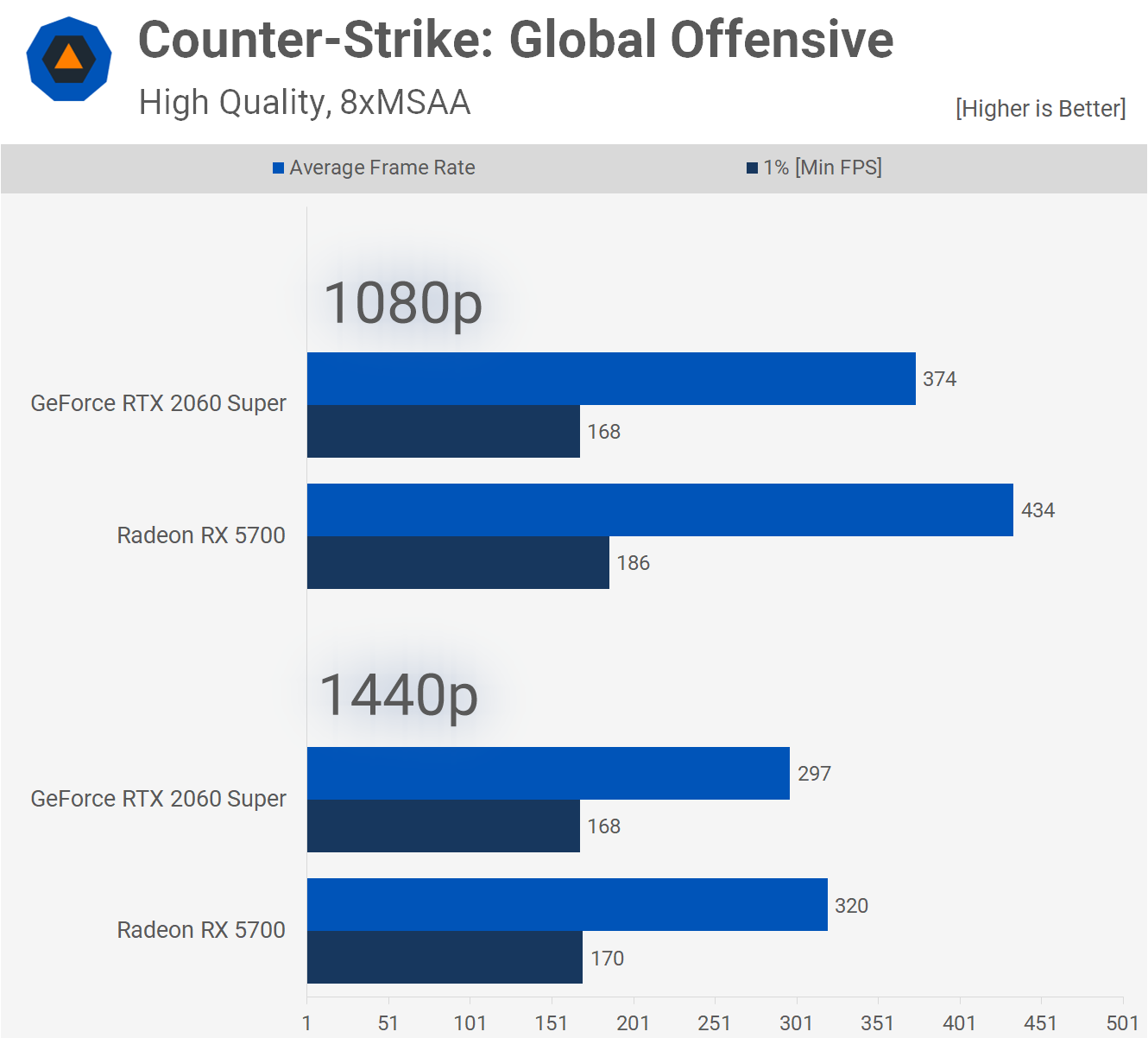
F1 2019 provides very competitive results, the 2060 Super was a few frames faster at 1080p while we see basically identical performance at 1440p. Both GPUs maintained well over 60 fps at 1440p.

Another title to show very competitive results is The Witcher 3 Wild Hunt, the 2060 Super was a few frames faster, but again an identical gaming experience.
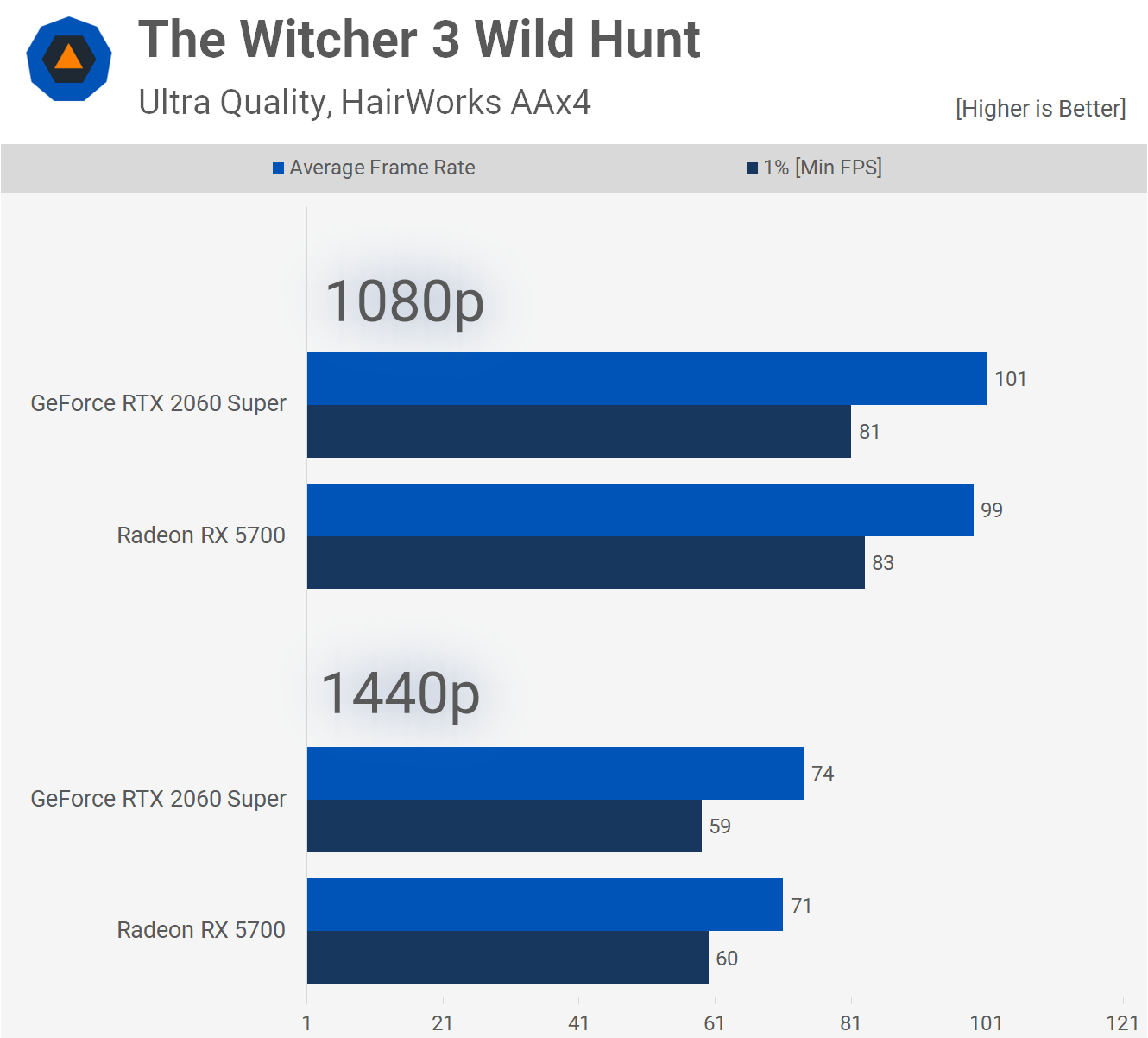
The 2060 Super nudged ahead in Wolfenstein: Youngblood, delivering 6% more performance at 1080p and 9% more performance at 1440p. Not a huge difference and both GPUs did push over 100 fps at all times, even at 1440p.

Fortnite is a mega popular title and you'll see strong frame rates with either the 5700 or 2060 Super. The GeForce GPU was 6% faster at 1080p, though 1% low performance was identical and then at 1440p we see up to a 4% margin in favor of the green team.
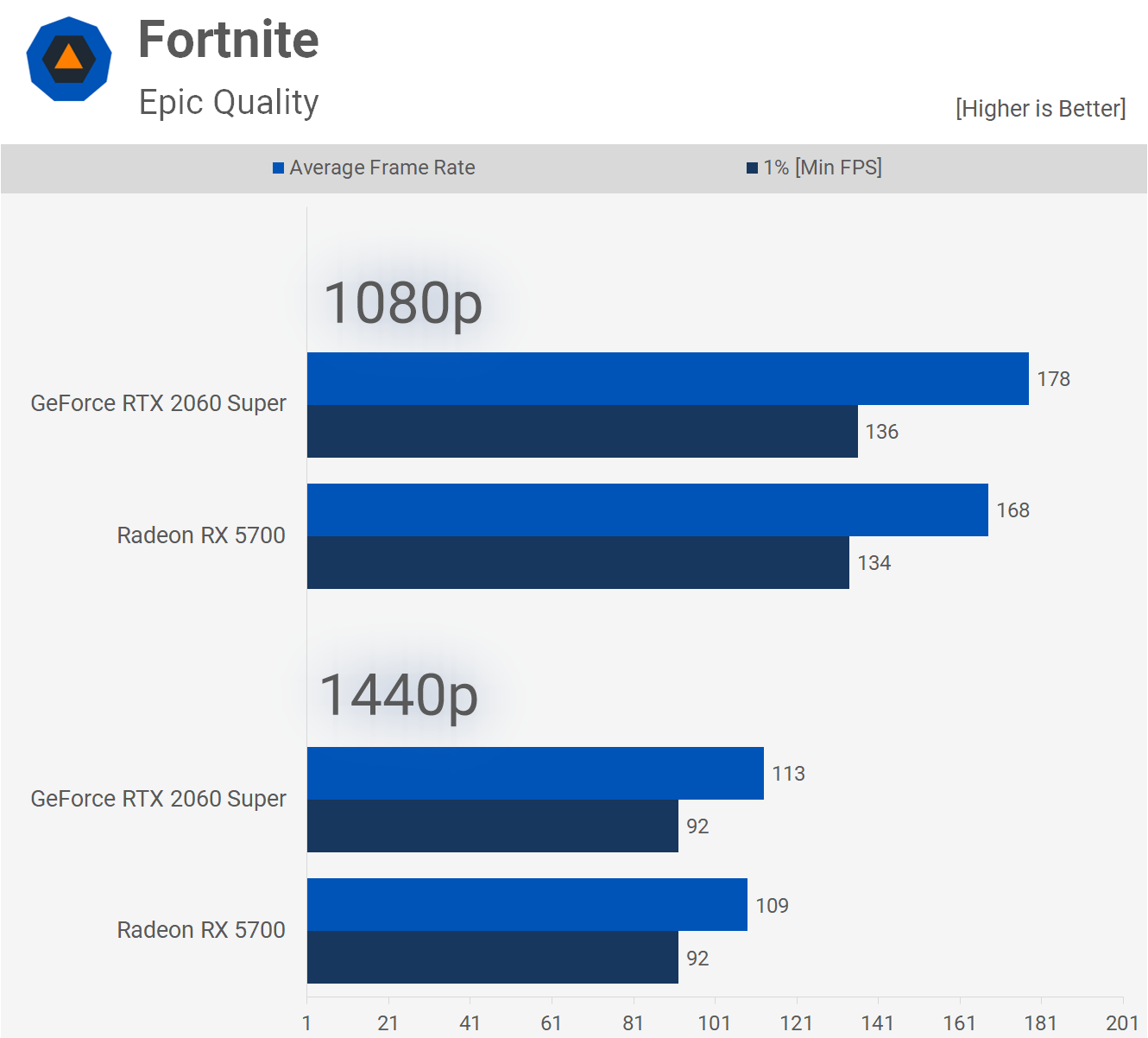
Strange Brigade was a title AMD used to dominate but with a few optimized driver updates Nvidia's clawed away at AMD's advantage. In the case of the 2060 Super and 5700, Nvidia's actually well ahead, beating the $350 Radeon GPU by a 9% margin.

PUBG fans have always been best served by GeForce GPUs and that still remains the situation even today. The 2060 Super was around 17% faster at both resolutions and you will notice that extra performance in this title. That said if you play with competitive settings the frame rates will be so high it won't really matter which GPU you use.

The 5700 suffers rather weak 1% low performance at 1080p when testing with Project Cars 2, this data is of course based on an average of three runs and in this instance, all three passes reported the same 63 fps. Despite the poor 1% low performance the average frame rate was comparable to that of the 2060 Super and we do see more competitive performance overall at 1440p.
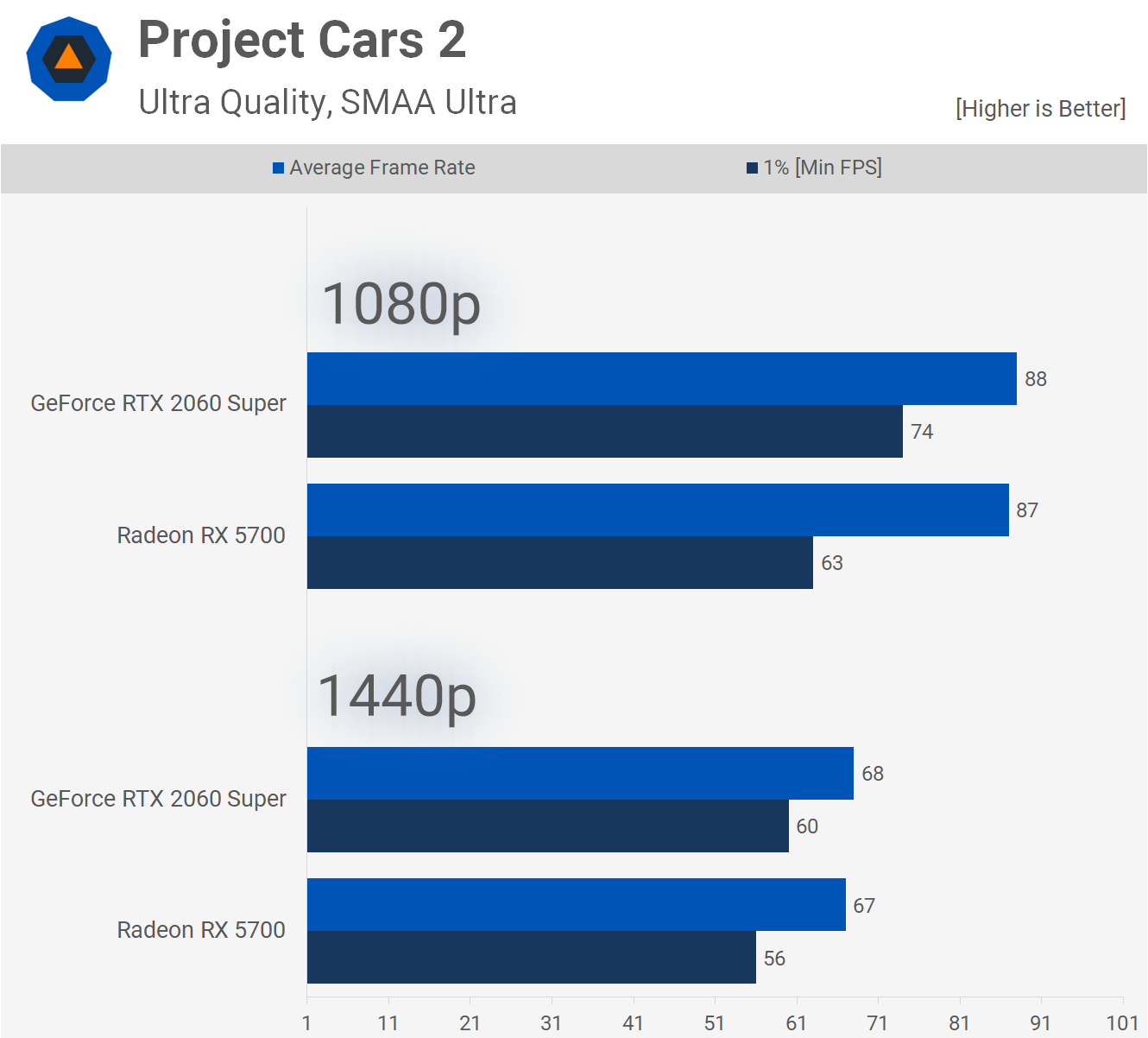
Last up we have World of Tanks and this one goes in favor of Nvidia as the 2060 Super delivers 7% more performance at 1080p and 11% more at 1440p. You won't notice the difference at 1080p but at 1440p you might notice the extra frames with the 2060 Super, plus it did show a much better 1% low fps performance.
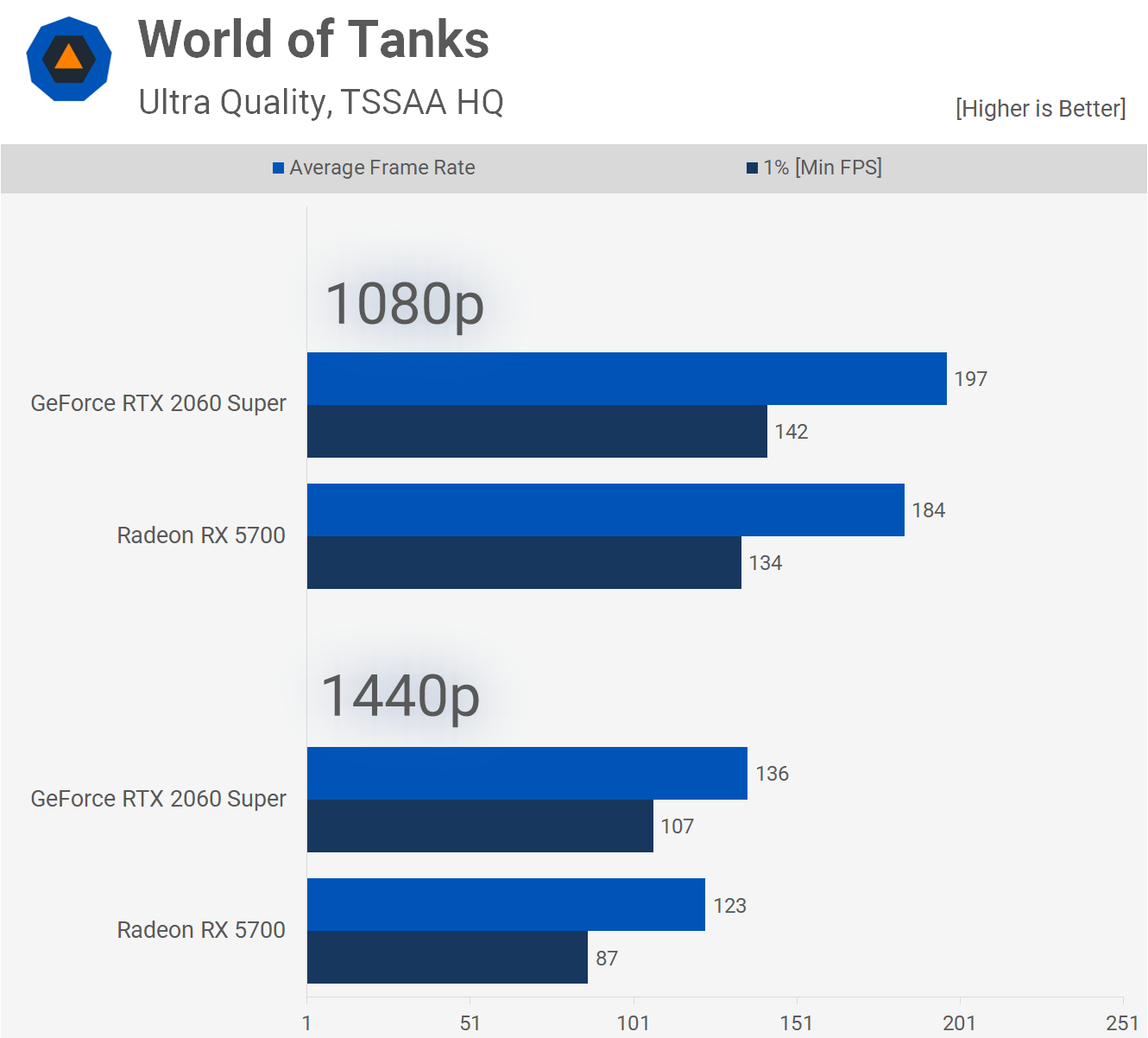
Performance Summary
It's hard to say which GPU had the upper hand in that sample of games, it certainly seemed to go back and forth quite a bit, but for the most part the margins were small. Still we've only looked at a dozen or so titles, so let's see how the two GPUs compare across 41 games at both 1080p and 1440p...

At 1080p across 41 games tested as shows above, the GeForce RTX 2060 Super is ~3% faster on average. The biggest outlier here was Vermintide 2 where the RTX 2060 Super was 34% faster, but even if we remove that result, the GeForce GPU was still 3% faster on average and that's the beauty of testing so many games, outliers don't impact on the overall result.
Moving to 1440p, as shown on the graph below, the 2060 Super is 4% faster on average when looking at the full 41 games. We're looking at less than a 5% margin overall, which means for the most part, performance is going to be close with either GPU as we observed in the dozen or so games we looked at closely.

For the cost per frame analysis we're using the MSRP as it is possible to purchase either the RX 5700 or RTX 2060 Super at these prices. Doing so means you'll be paying 12% more per frame for the GeForce GPU based on the 1080p data, or 11% more based on the 1440p data. Going in this review we knew the Radeon was a tad more affordable, so based on the performance results the RTX 2060 Super comes in at a little over a 10% price premium.

Closing Remarks, Overclocking
Overall the RTX 2060 Super is a whisker faster, but the RX 5700 offers slightly more bang for your buck. We can't see you going wrong with either option though as they are evenly matched and perform well for the price.
As a side note, we recently benchmarked an overclocked RX 5700 flashed with a 5700 XT BIOS. We found you're looking at a 10% boost in performance on average. However this is not a solution for everyone as there is some risk associated with flashing a graphics card BIOS and it's not as simple as just firing up your favorite tuning utility and cranking up the clock frequency.
If you're willing to take on the challenge and tech savvy enough to pull it off, then yes, you can unlock quite a bit more performance from an RX 5700, but note that will also increase power consumption by 25+% which makes the card to run hotter and therefore generate more noise, but hey, that's overclocking. In such instances we also recommend you buy an RX 5700 with a better stock cooler.
But before sealing the deal on a flashed RX 5700, it's also worth noting that you can boost the performance of the RTX 2060 Super by about 8% with a basic core and memory overclock using a utility such as MSI AfterBurner.
As for which way you should go, it will come down to pricing in your region and what models are available. Assuming the RX 5700 is $50 cheaper, then we think we'd get the RX 5700. But once you get closer in price, say by a minor ~$20 difference, then the GeForce RTX 2060 Super becomes the better choice in our opinion, so be mindful of that when looking at AIB models. For example, we'd rather have a base model RTX 2060 Super than a premium RX 5700.
Besides price and performance there aren't any other factors swaying us in either direction. Nvidia wants to push ray tracing support as a selling point of the RTX 2060 Super but we don't believe that it is a factor. The 2060 we feel is woefully underpowered to take advantage of ray tracing in modern titles and that's why we hadn't mentioned it until this point. As a follow-up to our previous on the matter, we'll be revisiting ray tracing performance with the Super series GPUs very soon.
Lastly, it's worth mentioning there's RTX 2060 non-super model which seems to be selling for around $350. That's the same price as the RX 5700 however it's ~9% slower than the Radeon, so unless you can get it for something closer to $310, it doesn't make sense. There's also the GTX 1660 Ti, which is an exceptional GPU at $280 meaning it will cost you less but you will get less performance than the RTX 2060 Super and RX 5700 can offer.
